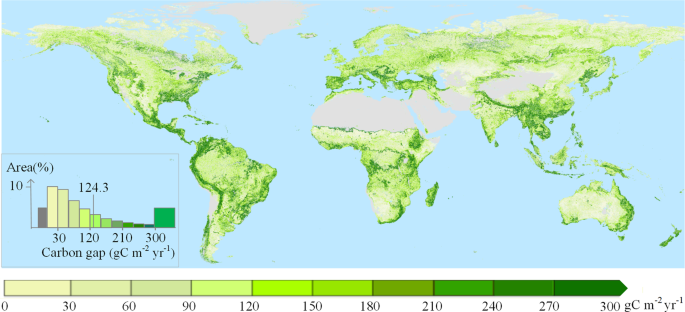The article categorizes factors affecting vegetation carbon sequestration into three main areas: climate impacts (mainly precipitation and temperature), other environmental factors (such as landforms, vegetation types, and soil properties), and human-related land management practices. It explains that when the influences of climate and environmental factors are removed, variations in carbon sequestration can be attributed solely to human impact.
Using net primary productivity (NPP) as a measure of carbon sequestration capacity, the study employs models to analyze the interaction between climate and human practices. It introduces the concept of climate-rectified NPP (NPPCR) to isolate human impacts on NPP variation. The objective is to identify potential increases in carbon sequestration (referred to as the carbon gap) achievable through better land management without changing land use or vegetation biomes.
Data is processed using publicly available datasets, focusing on segments of homogeneous environmental zones, and uses statistical methods to quantify the carbon gap. The analysis reveals significant potential for enhanced carbon sequestration—estimated at an increase of 13.74 PgC per year—with human land management practices being the key to achieving this goal.
The study also validates its findings with data from grasslands in Inner Mongolia, highlighting the positive impacts of optimal land management practices on vegetation productivity and carbon sequestration. Overall, the research underscores the critical role humans can play in maximizing carbon sequestration through informed land management strategies.
Source link


